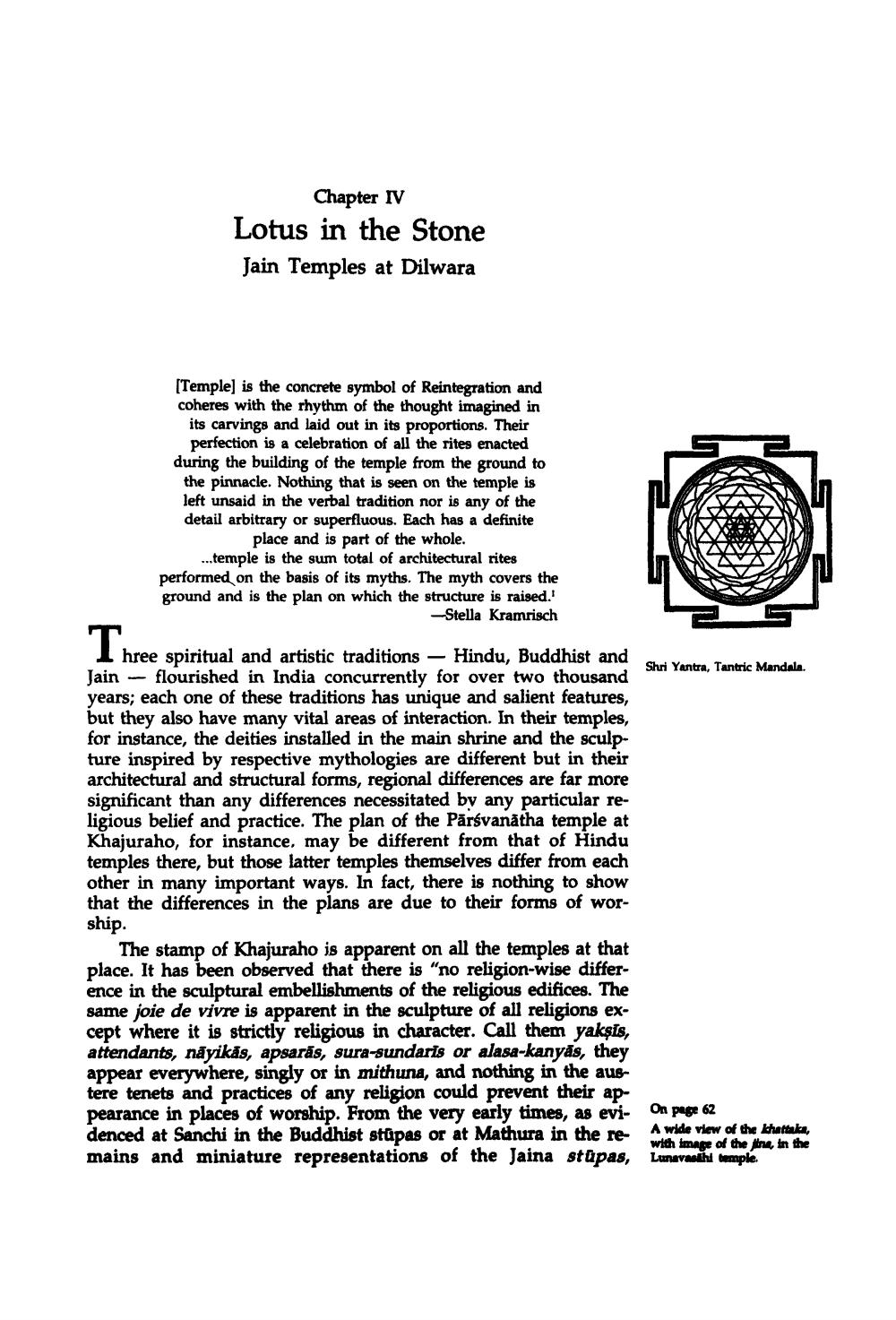________________
Chapter IV Lotus in the Stone Jain Temples at Dilwara
[Templeis the concrete symbol of Reintegration and coheres with the rhythm of the thought imagined in
its carvings and laid out in its proportions. Their
perfection is a celebration of all the rites enacted during the building of the temple from the ground to
the pinnacle. Nothing that is seen on the temple is left unsaid in the verbal tradition nor is any of the detail arbitrary or superfluous. Each has a definite
place and is part of the whole. ...temple is the sum total of architectural rites performed on the basis of its myths. The myth covers the ground and is the plan on which the structure is raised.'
Stella Kramrisch
Ihree spiritual and artistic traditions - Hindu, Buddhist and
Shri Yantra, Tantric Mandala. Jain - flourished in India concurrently for over two thousand years; each one of these traditions has unique and salient features, but they also have many vital areas of interaction. In their temples, for instance, the deities installed in the main shrine and the sculpture inspired by respective mythologies are different but in their architectural and structural forms, regional differences are far more significant than any differences necessitated by any particular religious belief and practice. The plan of the Pårsvanātha temple at Khajuraho, for instance, may be different from that of Hindu temples there, but those latter temples themselves differ from each other in many important ways. In fact, there is nothing to show that the differences in the plans are due to their forms of worship.
The stamp of Khajuraho is apparent on all the temples at that place. It has been observed that there is "no religion-wise difference in the sculptural embellishments of the religious edifices. The same joie de vivre is apparent in the sculpture of all religions except where it is strictly religious in character. Call them yakşis, attendants, nāyikās, apsarās, sura-sundaris or alasa-kanyās, they appear everywhere, singly or in mithuna, and nothing in the austere tenets and practices of any religion could prevent their appearance in places of worship. From the very early times, as evidenced at Sanchi in the Buddhist stūpas or at Mathura in the re
A wide view of the Khattaka,
with image of the tra, In the mains and miniature representations of the Jaina stūpas, Lunavaathi temple




